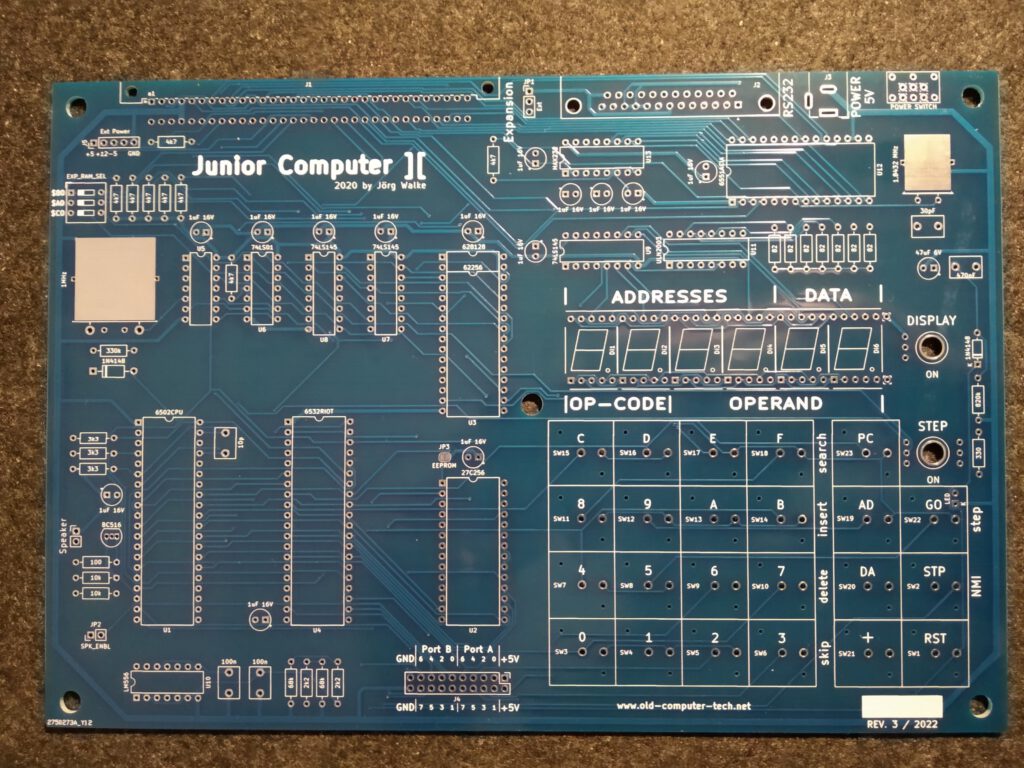With the help of users on the German Classic Computing forum I have added many manuals and magazines in German about those systems:
– AIM 65 PC100 manuals
– MICROMAG magazines
– KIM-1 manuals in German
I also added books on the 6502 in general and on the KIM-1, SYM-1 and AIM 65 to the Books section.
Reading old magazines is always fun, from the period 1976 to 198x magazines were filled with articles on the 6502, the KIM-1 and other SBC’s.
German, Dutch and English magazine articles extracted here.
Kilobaud, Byte, Dr Dobbs and of course the dedicated 6502 User Notes, MICRO Journal and Compute are valuable sources, but look at the many magazines on this page!







 On the picture above, you can see the actual rev. 2 board of the Junior Computer ][.The new revision 3 board has arrived!
On the picture above, you can see the actual rev. 2 board of the Junior Computer ][.The new revision 3 board has arrived! …all components assembled and soldered
…all components assembled and soldered …and it works fine
…and it works fine


